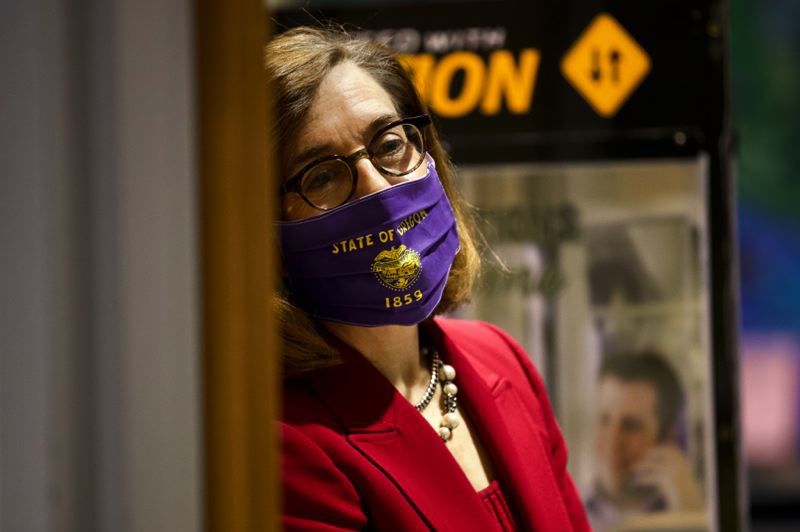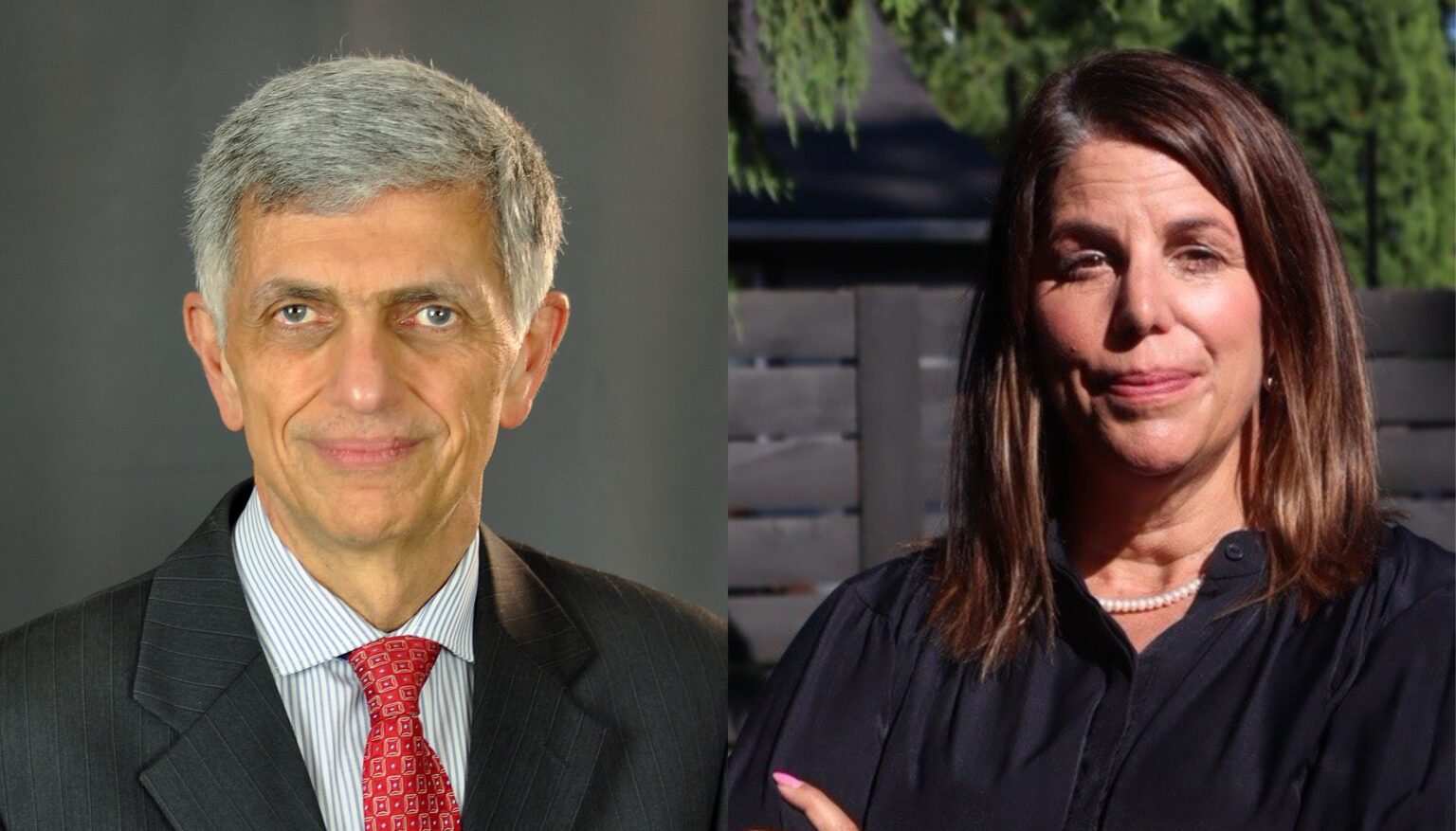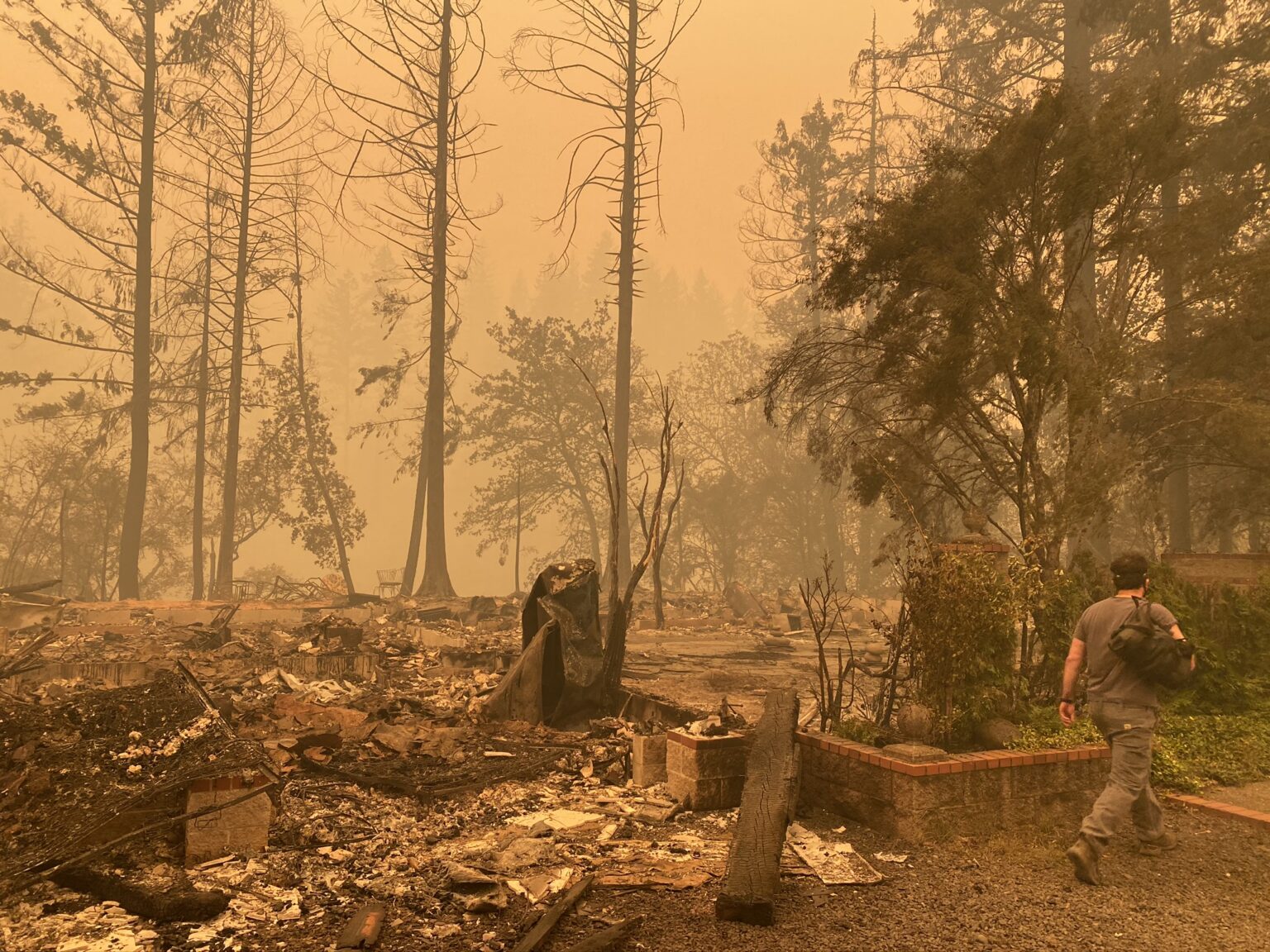2020: A year that rocked Oregon and the world
Published 5:30 pm Thursday, December 31, 2020

- PMG PHOTO: JAIME VALDEZ - Gov. Kate Brown, at a May press event, wearing her social distancing mask in public.
“What fresh hell is this?”
If 2020 were given a slogan, it might be caustic writer Dorothy Parker’s quip whenever her door bell rang.
Trending
The bell rang often — way too often — in 2020.
The impeachment of President Donald Trump.
Nationwide demonstrations over the killing of Black people by police — including over 100 days of sometimes violent demonstrations in Portland. Federal law enforcement officers sent to the city over the objections of the mayor and local officials.
Massive wildfires burned over one million acres in Oregon, killing 10 and destroying 4,000 homes. The fires spread smoke across the state that at one point gave Sisters, Oregon the worst air quality in the world.
The death of liberal Supreme Court Justice Ruth Bader Ginsburg. She was replaced by conservative Amy Coney Barrett.
Another walk-out in the Oregon Legislature, followed by three special sessions. A failed GOP attempt to recall Gov. Kate Brown.
Trending
A federal tactical squad sent to Bend by the U.S. attorney for Oregon. Their mission was to extricate immigration agents and two detainees whose departure had been blocked by activists opposed to Trump’s aggressive policy on immigration.
A bitter election that swept Trump out of office — though he continues to try every avenue to overturn the result.
All that alone would make for an epic news year. But dominating everything was the worst worldwide pandemic in over 100 years.
So far, COVID-19 has killed 1.8 million around the world, including more than 345,000 in the United States and nearly 1,500 in Oregon.
A pandemic was not on the political radar at the start of the 2020. The World Health Organization had issued a Public Health Emergency of International Concern (PHEIC) for an “extraordinary event” five times since 2005: swine flu in 2009, Ebola and wild poliovirus in 2014, zika virus in 2016 and Ebola again in 2019.
In January, the biggest issue in Oregon was the fate of a carbon cap program in the Legislature. For the second time in two years, Democratic leaders believed they had the votes to pass a bill. But Republicans walked-out to deny the two-thirds attendance of members in each chamber to establish a quorum to consider legislation. Brown then issued an executive order to unilaterally start the process.
Huge crowds attended the college football championship games and the Super Bowl. Fans got an early taste of the baseball season with spring training games in Arizona and Florida.
“Sonic the Hedgehog” topped movie theater box offices, showing in 4,198 theaters in February to pull in $123 million. “Star Wars: Episode IX — The Rise of Skywalker” had racked up $515 million since its release late in 2019.
The number 19 in COVID-19 designates that it first appeared in 2019. Late that year, a mysterious illness appeared in Wuhan, China. By January, it had spread through China and jumped to Europe. By the end of February, it was in Oregon. In December, Antarctica became the last continent to report cases.
The virus changed life immediately. In late winter, officials talked in terms of the pandemic lasting just weeks or months. Trump said it would disappear by April. Some scientists said it would die off when the weather turned warmer in the summer, much as the seasonal flu did each year.
Instead, COVID-19 is now now spreading faster than at any time during the crisis. A new, more easily spread variation appeared in Britain and by year’s end was reported in California and Colorado.
Oregon’s had plans for a disaster – but of a different kind. Most of the emergency responses are built around a 9.0 earthquake on the Cascadia Subduction Zone off the coast of Oregon. It would send tidal waves to decimate the coastal cities, while much of the area west of the Cascades would be heavily damaged.
But instead of a cataclysmic event that would be over in minutes but take the state months to recover from, 2020 brought an undulating long-term disaster in COVID-19.
By March, the theaters were closed. No sports events. No concerts. Eventually, no travel and no visitors — if possible. Schools were closed, with learning going online to mixed results.
The initial outbreak hopscotched from hot spot to hot spot around the state, only to eventually settle into a community-spread pattern that left no corner of the state untouched.
The early stay-at-home order issued by Brown seemed to work, with Oregon “bending the curve” on infection rates by late spring to the point that a phased reopening was rolled out.
By July, the curve was bending back up, only to head down again in August. The infection rate bottomed out on a day usually associated with another time Americans were unexpectedly killed: Sept. 11, the date of the 2001 terrorist attacks that killed about 3,000 people.
But an ominous new phase began as fall approached, with a steep rise in cases that only now is showing some initial signs of slowing. In December, COVID-19 was killing the equivalent of the 9/11 attack nearly every day in the U.S.
The nature of the United States of America is that much of the decision-making on handling the pandemic was decided by states, who took markedly different approaches. Oregon had some of the most restrictive rules, while neighboring Idaho had some of the least. Oregon’s approach has resulted in the fourth lowest infection rate per capita of the 50 states.
But in a sharply politically divided nation, the virus became a political litmus test.
Trump at first dismissed COVID-19 as a blip of illnesses. Even when the pandemic swept across the nation, Trump did not follow health experts’ recommendations to wear a mask and maintain physical distance from others. Many of his supporters did the same, refusing to wear masks and opposing closing businesses and other restrictions.
Trump was infected with COVID-19 in October and spent a weekend in the hospital, receiving aggressive treatment with medicines available to only a handful of people. Within three days, he was out of the hospital.
Trump critics who hoped his serious brush with the virus would temper his refusenik attitude toward masks, social distancing and lockdown were quickly disappointed. Returning from the hospital, Trump went to a balcony in the White House and dramatically took off his mask. He appeared in a video telling Americans not to let the virus dominate their lives. He opposed vote-by-mail, a stance that led to voters standing in long lines on election day in some states hardest hit by the pandemic.
Trump’s doubts fed and echoed feelings among a large swath of Americans who felt the cure was worse than the disease.
Oregon’s relative success in limiting the infection rate of the virus came with a cost. The on-and-off shutdowns of businesses and activities to control spikes of COVID-19 crippled small businesses while an estimated 400,000 lost their jobs.
While the employment situation improved in the second half of the year, it is showing signs of another downturn as federal aid cuts have more employers shedding workers. The state’s antique Employment Department computer system couldn’t keep up, leaving jobless Oregonians without benefits for more than eight months. The department is still playing catch-up on the avalanche of claims.
It’s been 10 months since the virus appeared in Oregon and there is widespread “quarantine fatigue.” For some, that means stretching the boundaries of their isolation to include more visits with friends and family. A more strident form has individual businesses and sometimes whole cities or counties saying they won’t obey the rules anymore.
Protests of COVID-19 restrictions have grown and combined with Trump’s unsubstantiated claims of fraud in the election of Joe Biden to fuel increasingly aggressive demonstrations.
The Capitol in Salem has been closed during the pandemic, leading to protests in the plaza outside that at times have required police response. But the events took an especially aggressive turn on Dec. 21 during the Legislature’s special session.
Protestors tried to force their way into the Capitol to demand to be allowed into the galleries of the House and Senate. State and local police in riot gear were able to stop the advance just inside a side door that led to the rotunda. A few protestors then smashed some of the glass doors at the entrance.
Even news of the possible end of the pandemic turned sour. Two vaccines were released in December. Health workers and elderly people in long term care facilities started receiving the first of a two-shot inoculation. Oregon has given first shots to about 40,000 people.
The roll-out has been painfully slow. Logistical bottlenecks being experienced by many states has Oregon well below its original goal of having given 100,000 first shots by the end of 2020.
Polls show that 70 percent of the approximately 250 million adult Americans want to be vaccinated. But at the current rate, most won’t have their turn to get the needle until summer, or perhaps even autumn.
Meanwhile, the virus remains. The third wave of virus is setting records for infections and deaths, with a further spike caused by Christmas season travel starting to show in nationwide numbers. The full impact of holiday gatherings and travel won’t be know until mid-January.
Oregon has one of the lowest number of intensive care unit beds per capita in the United States. Some regions have sporadically reported having no ICU beds available on a given day.
Most people on the planet are glad that 2020 is over. But the calendar is a creation of humans. Time flows past artificial breaks of days, months and years.
The vaccines’ arrival in less than a year was incredible news. But the overall flow of good or bad still leans to the latter. Optimists who woke each morning fresh with hope of better days have had gone to bed disillusioned. Pessimists know that those who believed things couldn’t get worse have been proven repeatedly wrong in 2020.
Trump supporters are planning demonstrations across the country on Jan. 1. Trump has called for a protest rally in Washington, D.C. on January 6, the day Congress is supposed to sign-off on the Electoral College vote that made Biden the official winner. Several House and Senate Republicans say they will object to the certification, requiring a debate but unlikely to change the outcome.
Several cities in Oregon have announced an open rebellion against closures of restaurants and shops. The new Congress and new Legislature will face daunting tasks, not the least of which is to figure out how to meet without infecting everyone with COVID-19.
So, welcome 2021. It should be easy to improve on your predecessor. But we’ll all wait for the proof.




